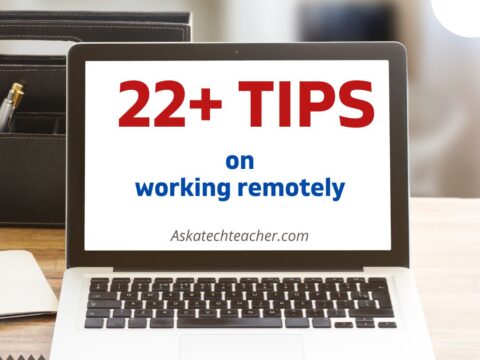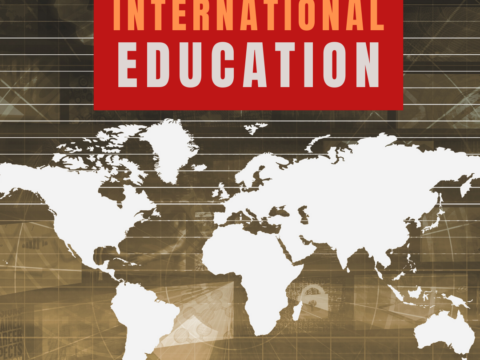While it’s become common for US students to study abroad, it is just as common for non-Americans to spend time studying in the US. If you live outside the US and are interested in study in America, here are some hints for how to make it happen, from one of our Ask a Tech Teacher contributors:
- Where to apply
- What to study
- Type of Student Visa
- Working while studying
- Wrap up
Things to Know Before Studying Abroad in the U.S.
The United States is one the most popular study destinations for overseas students, boasting academic prowess and cultural richness. Since America is so broad and diverse, it is a perfect place for overseas students.
You will be incorporated into a welcoming environment and will have the opportunity to experience different cultures while meeting individuals from over the world. Whether you want to work in the United States post-graduation or return to your native country, a US degree will expand your horizons and broaden your prospects.
If you’re looking forward to studying in the US but don’t know where to start, you can check out some courses at American International to see what interests you. Additionally, here are some things you should know before applying to any college or university in America:
Where to Apply
The United States is home to over 4,000 institutions for higher studies. You will also find that the US dominates world rankings of top 100 universities, with more than half of its institutions on that list. These also include eight prestigious universities, known as the Ivy League, that come under the top 10 universities in the world. The UK comes in second on the list.
With many colleges having different types and expenses and demanding applications, numerous overseas students may find studying in the United States daunting. Aside from the most prestigious and well-known institutions, the United States offers a diverse range of quality universities with varying values, aims, teaching styles, and fee structures.
The Wall Street Journal or Times Higher Education College Rankings may help you assess universities based on engagement, contact with professors, and general student experience. This will assist you in choosing the one that is most suited to your budget, interests, and goals. There are also several community colleges, public universities, and government-funded institutes with low tuition fees and great scholarship programs that you can apply to.
What to Study
It is common for people not to know what major they want as a career option. Luckily, universities in the United States offer a lot of flexibility to help pick a major. If a student desires to switch their major after enrolling in a program, they may do so. The U.S. also provides the opportunity to transfer between institutions as an exchange student.
After enrolling in a university, students can pick classes from various areas, including arts, sciences, and humanities. This can continue throughout the first two years of your US degree, which is ample time to decide on a major. During this period, individuals can explore various subjects and choose to specialize in a major they find interesting. Then, in their second or third year, students can declare their major.
The most sought-out courses among international students in the U.S. are STEM courses, business management, mathematics, social sciences, and liberal arts.
Type of Student Visa
When you’ve chosen an institution or received an acceptance letter, it’s time to research your student visa options. It is essential to carefully consider the sort of student visa you acquire, as this will be your entry ticket into the country. The category also affects the kind of institutions to which you can apply.
In the United States, there are two types of student visas. The F-1 visa is for international students going to the country for educational purposes, whereas the M-1 visa is for vocational students. Generally, most overseas students will consider the F-1 visa to join higher education institutions. Ensure you have all the necessary documentation to make your visa application hassle-free.
Working While Studying
Working while studying is a great way to finance your study abroad journey. It allows you the financial freedom to explore and make the most of your experience. Additionally, you can use this opportunity to pay for food, accommodations, and travel expenses.
If you’re an international student on an F-1 visa, you can work up to 20 hours per week throughout your studies. During the official term vacations, such as summer, this can extend to 40 hours each week. However, you are generally limited to working on campus.
To work off-campus, you must first obtain official authorization. Your visa package will outline the eligibility requirements for this. Fortunately, American institutions frequently post job openings for students all year round. To ensure you get the job, apply before the semester starts so you can get to it before local students do. Additionally, you can contact your admissions office for more information about university policies on student jobs.
Endnote
Studying in a foreign country with an unfamiliar environment may be scary at first for international students. However, with the right mindset and good background information about your study destination, you can turn this into the experience of a lifetime. So apply now and open up new career and life opportunities for yourself by studying abroad in the U.S.
–image credit Deposit Photo and Pexels
Jacqui Murray has been teaching K-18 technology for 30 years. She is the editor/author of over a hundred tech ed resources including a K-12 technology curriculum, K-8 keyboard curriculum, K-8 Digital Citizenship curriculum. She is an adjunct professor in tech ed, Master Teacher, webmaster for four blogs, an Amazon Vine Voice, CSTA presentation reviewer, freelance journalist on tech ed topics, and author of the tech thrillers, To Hunt a Sub and Twenty-four Days. You can find her resources at Structured Learning.






































It’s too late for me, but it’s interesting information for younger ones. Thanks for sharing.
It is interesting. It’s a guest post and I like how it’s written from a non-American perspective about coming to the US. She brought up ideas I wouldn’t have thought of.
That does make it extra helpful too.